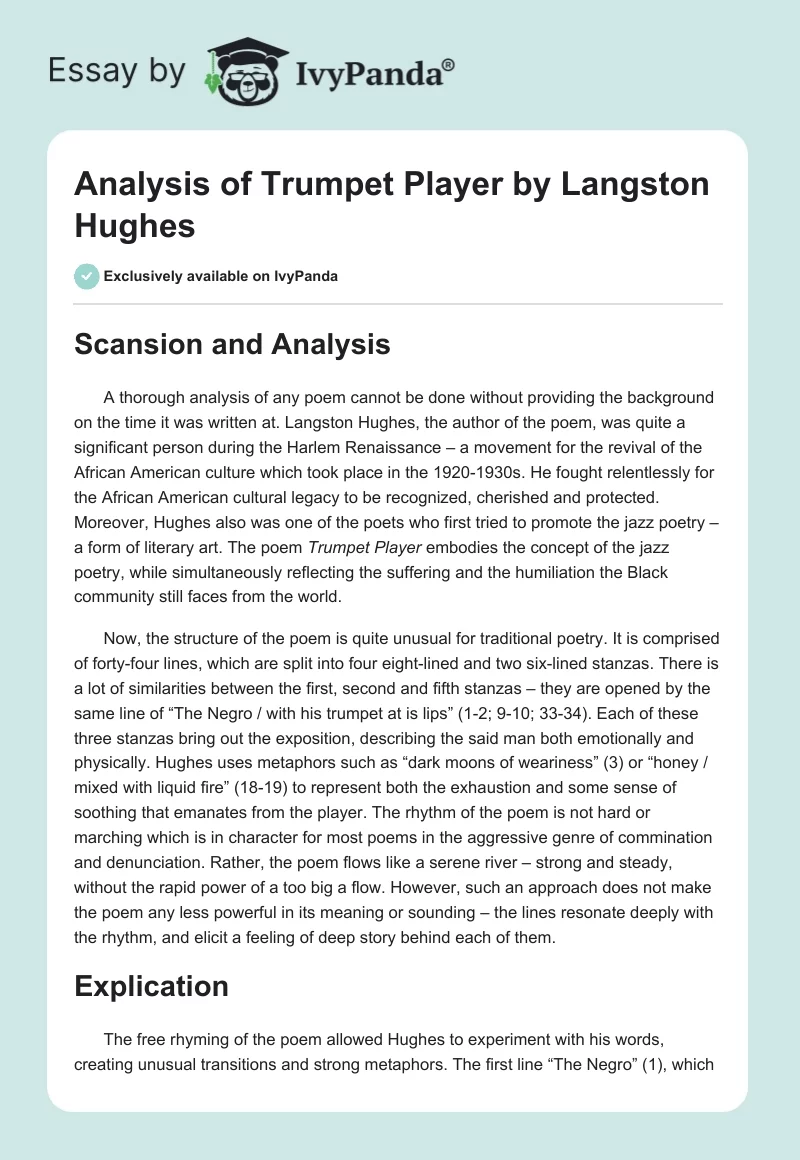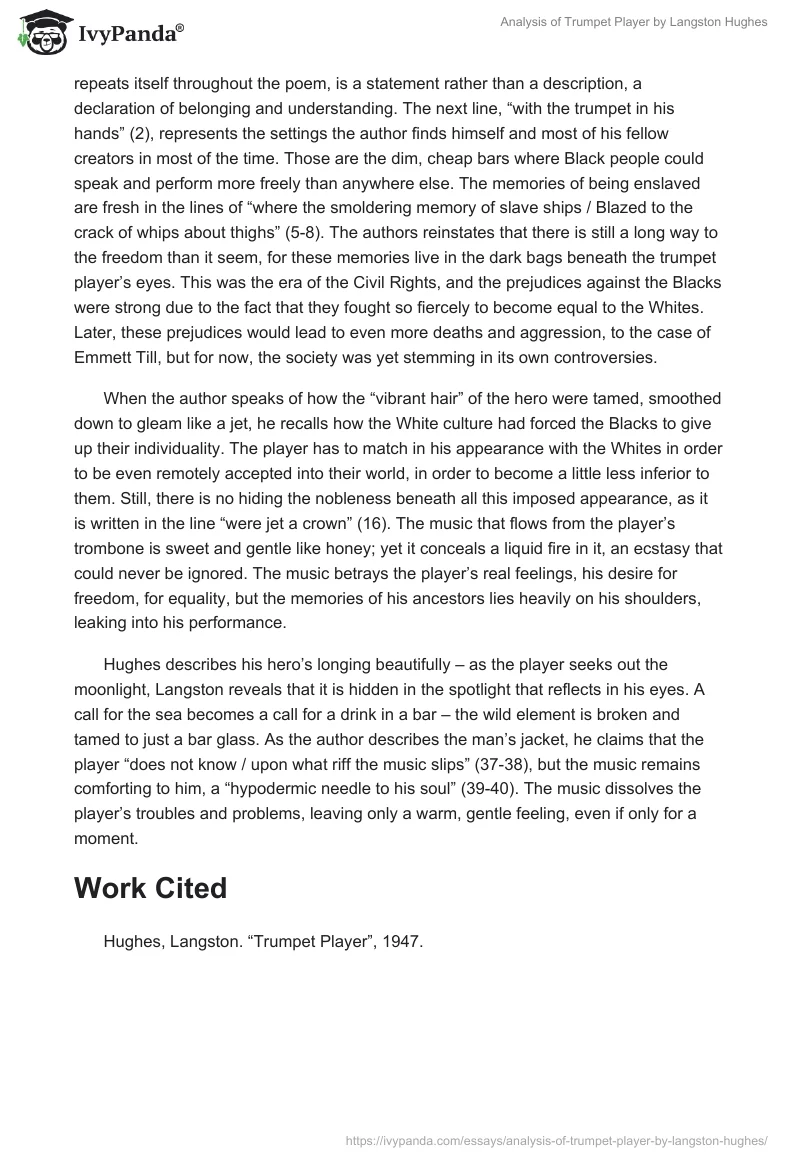Scansion and Analysis
A thorough analysis of any poem cannot be done without providing the background on the time it was written at. Langston Hughes, the author of the poem, was quite a significant person during the Harlem Renaissance – a movement for the revival of the African American culture which took place in the 1920-1930s. He fought relentlessly for the African American cultural legacy to be recognized, cherished and protected. Moreover, Hughes also was one of the poets who first tried to promote the jazz poetry – a form of literary art. The poem Trumpet Player embodies the concept of the jazz poetry, while simultaneously reflecting the suffering and the humiliation the Black community still faces from the world.
Now, the structure of the poem is quite unusual for traditional poetry. It is comprised of forty-four lines, which are split into four eight-lined and two six-lined stanzas. There is a lot of similarities between the first, second and fifth stanzas – they are opened by the same line of “The Negro / with his trumpet at is lips” (1-2; 9-10; 33-34). Each of these three stanzas bring out the exposition, describing the said man both emotionally and physically. Hughes uses metaphors such as “dark moons of weariness” (3) or “honey / mixed with liquid fire” (18-19) to represent both the exhaustion and some sense of soothing that emanates from the player. The rhythm of the poem is not hard or marching which is in character for most poems in the aggressive genre of commination and denunciation. Rather, the poem flows like a serene river – strong and steady, without the rapid power of a too big a flow. However, such an approach does not make the poem any less powerful in its meaning or sounding – the lines resonate deeply with the rhythm, and elicit a feeling of deep story behind each of them.
Explication
The free rhyming of the poem allowed Hughes to experiment with his words, creating unusual transitions and strong metaphors. The first line “The Negro” (1), which repeats itself throughout the poem, is a statement rather than a description, a declaration of belonging and understanding. The next line, “with the trumpet in his hands” (2), represents the settings the author finds himself and most of his fellow creators in most of the time. Those are the dim, cheap bars where Black people could speak and perform more freely than anywhere else. The memories of being enslaved are fresh in the lines of “where the smoldering memory of slave ships / Blazed to the crack of whips about thighs” (5-8). The authors reinstates that there is still a long way to the freedom than it seem, for these memories live in the dark bags beneath the trumpet player’s eyes. This was the era of the Civil Rights, and the prejudices against the Blacks were strong due to the fact that they fought so fiercely to become equal to the Whites. Later, these prejudices would lead to even more deaths and aggression, to the case of Emmett Till, but for now, the society was yet stemming in its own controversies.
When the author speaks of how the “vibrant hair” of the hero were tamed, smoothed down to gleam like a jet, he recalls how the White culture had forced the Blacks to give up their individuality. The player has to match in his appearance with the Whites in order to be even remotely accepted into their world, in order to become a little less inferior to them. Still, there is no hiding the nobleness beneath all this imposed appearance, as it is written in the line “were jet a crown” (16). The music that flows from the player’s trombone is sweet and gentle like honey; yet it conceals a liquid fire in it, an ecstasy that could never be ignored. The music betrays the player’s real feelings, his desire for freedom, for equality, but the memories of his ancestors lies heavily on his shoulders, leaking into his performance.
Hughes describes his hero’s longing beautifully – as the player seeks out the moonlight, Langston reveals that it is hidden in the spotlight that reflects in his eyes. A call for the sea becomes a call for a drink in a bar – the wild element is broken and tamed to just a bar glass. As the author describes the man’s jacket, he claims that the player “does not know / upon what riff the music slips” (37-38), but the music remains comforting to him, a “hypodermic needle to his soul” (39-40). The music dissolves the player’s troubles and problems, leaving only a warm, gentle feeling, even if only for a moment.
Work Cited
Hughes, Langston. “Trumpet Player”, 1947.


